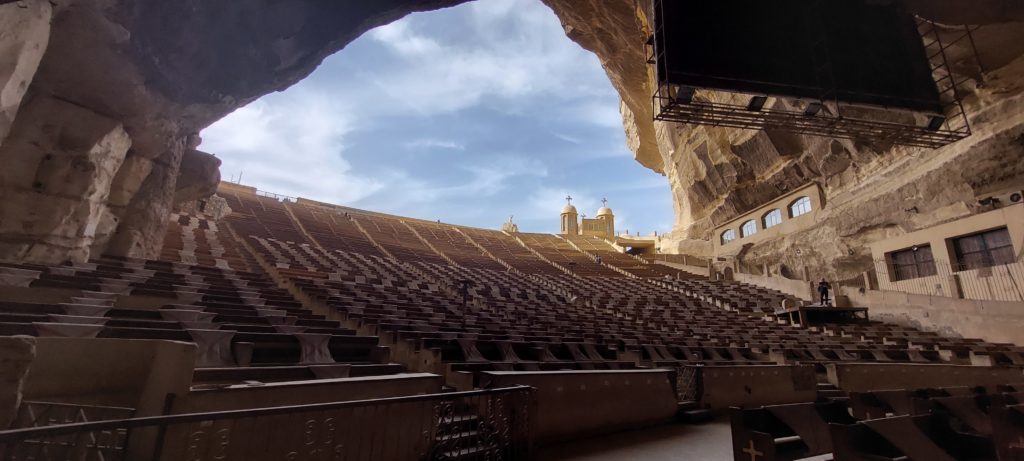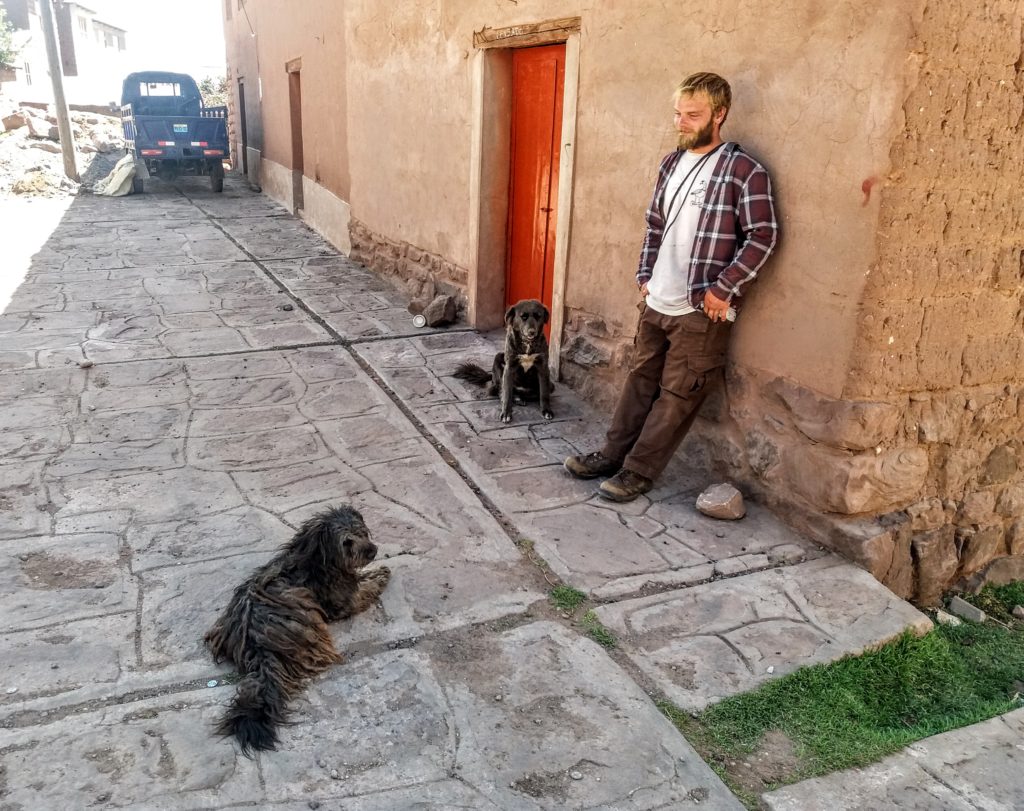
I’d been to Garbage City a couple of times already but agreed to return with a new friend from Sydney who just moved into the Holy Sheet Hostel where I was staying in Cairo.
“Justin” was traveling solo on holiday from his job managing a bar, restaurant and gaming facilities in Australia’s largest city.
He had a four-year old Lonely Planet guide book with a paragraph about Garbage City which mentioned a French-Tunisian graffiti artist who had created what Lonely Planet described as “one of the most astonishing pieces of street art in the Middle East” in Garbage City in the 1970s. But it could only be seen in its entirety from an upper floor of a particular building near the massive cave church of St. Simon the Tanner.
There was also the name and phone number of a local guide who could take us there, since it was said to be not easy to find. It was Maged!
I don’t normally seek out guides but since I was with my new friend and there was indeed information about Garbage City that a guide might help me with, I thought it was a good idea.
Maged agreed to take us on a tour of Garbage City including the street art. We negotiated the price for one hour and made arrangements to meet.
We had an informative tour that lasted more than an hour during which Maged told us how much he loved giving tours and that neither the length of the tour nor the money was of much concern to him because he loved telling the story of his neighborhood to visitors so much.
We paid him the agreed-upon price before seeing the street art, however, and my friend and I each added a modest tip.
To our surprise, Maged said it wasn’t enough. He wanted more. We kindly reminded him what we’d agreed to, and the tip we gave him, and of his own words extolling the joy of bringing us the Garbage City story.
So we were all a little disappointed at that point but he took what we offered, then decided he didn’t have time to take us to see the mural. He gave us directions to it.

When Justin and I followed Maged’s directions to the viewing area, we wondered whether we were really in the right place. The street art was several lengths of a football pitch away, partially blocked by scaffolding of some sort, and colorful but underwhelming – what we could see of it.
The prospect of seeing the artist’s inspiring quotation, supposedly a key part of the work spread over nine buildings, was nil, hardly worth the effort we put in getting there. No wonder Maged declined to attend the tour’s grand finale.
Lonely Planet’s “astonishing” hype was a bunch of flummery, which might have reduced Maged’s tip had he stuck around to the end. I suspect the mural may have been better in the ’70s.
Yet it’s a good example of why I don’t bother with guide books, especially Lonely Planet. My son brought one with him to Peru when he traveled with me for a month in 2017, and it plainly stated for some reason that there were no dogs in the village of Llachon, near Lake Titicaca, Peru.
My son Mackey and I are both dog lovers. When we trekked to Llachon we made friends with a number of friendly canines near the village store. I took photos and sent them to Tony Wheeler, Lonely Planet’s founder, with the thought that he might want to update the decidedly erroneous info in its Lake Titicaca travel description. There was no response to my first inquiry, and none to my second.

I think that’s just what the internet has made of this once mighty travel guide, now slow, unresponsive and unable to adapt to change, fallen by the wayside of the modern digital information road, which could have allowed me an instant opportunity to question and validate the info being put forth as true, allowing LP’s guidebook to be of some real help to its readers.
Guidebooks also add weight and reduce space in a backpack, so I stick to my phone and pray to the internet gods for a clear signal.
That’s why I don’t use them, printed guidebooks, that is.
WOW, that cave church is astonishing! Too bad that Maged went back on his word. That is always disappointing. Always better if someone quotes a higher price and sticks to it.